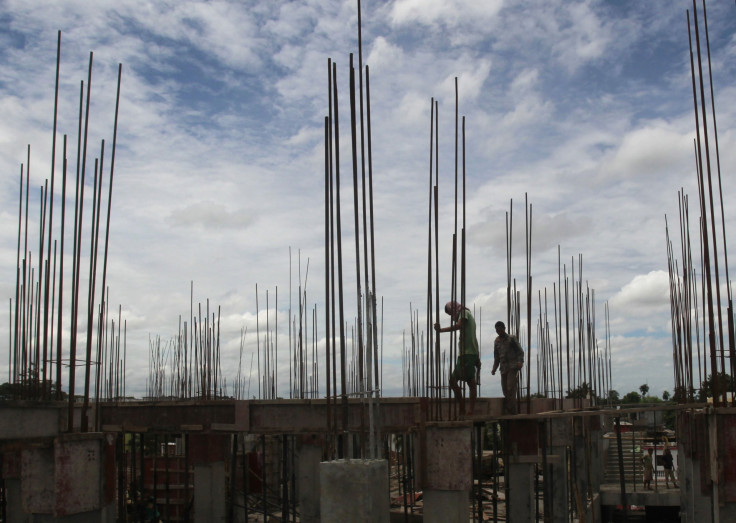India Clocks 4.4 Percent Growth, Falling Behind Expectations And First Quarter Growth

India’s economy grew by a lower-than-expected 4.4 percent in the first quarter of 2013, compounding the woes of the government, which is scrambling to tackle multiple challenges including double-digit inflation, a steeply depreciating currency and a soaring current account deficit.
The first quarter growth was driven primarily by financing, insurance, real estate and business services, which grew 8.9 per cent, and community, social and personal services, which grew 9.4 percent. The April-June growth is lower than the 4.8 percent yearly expansion of India’s gross domestic product, or GDP, seen in the January-March period of 2013, and lower than analysts’ consensus of 4.6 percent.
The federal fiscal deficit in the current financial year so far has reached 3.4 trillion rupees ($51.4 billion) in July, or 62.8 percent of the deficit estimated in the budget, and higher than 51.5 percent reached in the corresponding period in the previous year.
The Asian giant, which logged near double-digit growth only five years ago, is one of the many emerging economies caught in the spillover effect of a fear of tightening of monetary policy in the U.S., although, compared to the economic crisis it witnessed in 1991, India remains relatively financially sound, with foreign reserves of $278.8 billion as of Aug. 16, which is expected to cover more than seven months of imports.
The crash of the rupee, which has so far depreciated about 18 percent against the dollar from the start of this year, coupled with high inflation, has rendered India’s central bank helpless, forcing it to abort its monetary policy designed to boost growth, and instead led to a tightening of liquidity in the country's financial system.
Sluggishness in adopting and implementing reforms, and general policy paralysis are also blamed for India’s current crisis, as the country is heading for parliamentary elections in 2014.
The rupee and the wholesale price index, which rose to a five-month high of 5.79 percent in July, higher than the 5 percent target set by the Reserve Bank of India, need to stabilize before the central bank can cut interest rates further to boost economic recovery.
India has a current account deficit of $98 billion, or 4.9 per cent of GDP, which is the third-highest in the world in absolute terms, behind the U.S. ($473 billion) and the UK ($106 billion), according to a report by Morgan Stanley. However, Finance Minister P. Chidambaram has sought to calm investors by stating that India will lower its current account deficit to $70 billion this year.
And, in an attempt to curb gold imports, which is one of the key factors driving up the deficit, India is considering asking commercial banking establishments to buy gold from people and divert it to metal refiners, according to Reuters.
© Copyright IBTimes 2024. All rights reserved.












